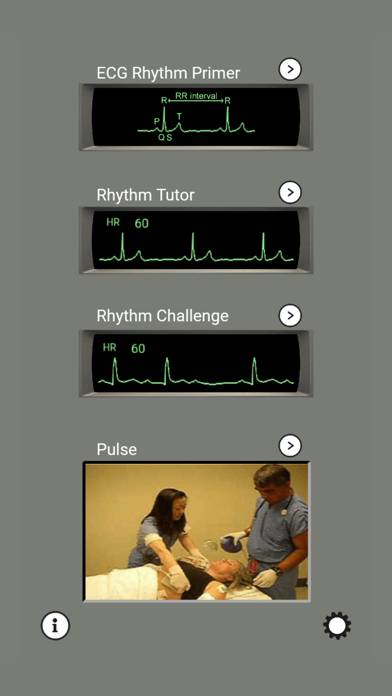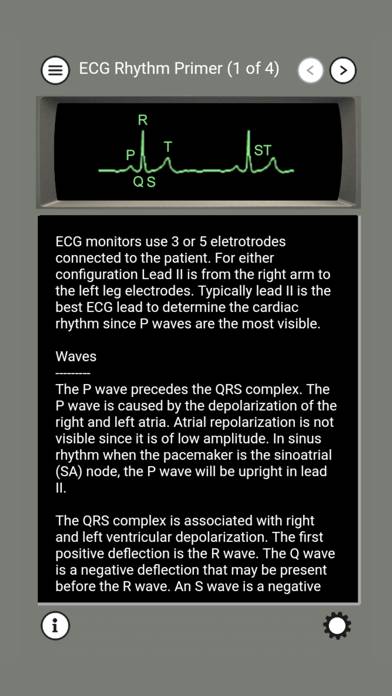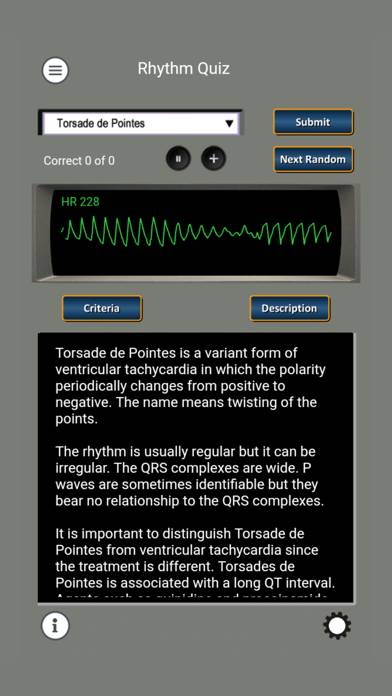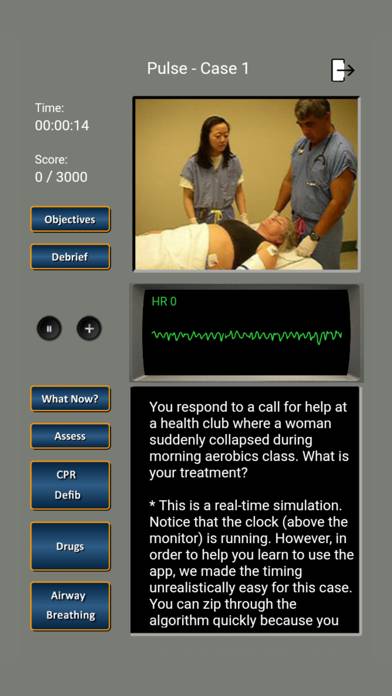How to Delete ECG and ACLS Tutor
Published by: Anesoft CorporationRelease Date: May 09, 2024
Need to cancel your ECG and ACLS Tutor subscription or delete the app? This guide provides step-by-step instructions for iPhones, Android devices, PCs (Windows/Mac), and PayPal. Remember to cancel at least 24 hours before your trial ends to avoid charges.
Guide to Cancel and Delete ECG and ACLS Tutor
Table of Contents:




ECG and ACLS Tutor Unsubscribe Instructions
Unsubscribing from ECG and ACLS Tutor is easy. Follow these steps based on your device:
Canceling ECG and ACLS Tutor Subscription on iPhone or iPad:
- Open the Settings app.
- Tap your name at the top to access your Apple ID.
- Tap Subscriptions.
- Here, you'll see all your active subscriptions. Find ECG and ACLS Tutor and tap on it.
- Press Cancel Subscription.
Canceling ECG and ACLS Tutor Subscription on Android:
- Open the Google Play Store.
- Ensure you’re signed in to the correct Google Account.
- Tap the Menu icon, then Subscriptions.
- Select ECG and ACLS Tutor and tap Cancel Subscription.
Canceling ECG and ACLS Tutor Subscription on Paypal:
- Log into your PayPal account.
- Click the Settings icon.
- Navigate to Payments, then Manage Automatic Payments.
- Find ECG and ACLS Tutor and click Cancel.
Congratulations! Your ECG and ACLS Tutor subscription is canceled, but you can still use the service until the end of the billing cycle.
How to Delete ECG and ACLS Tutor - Anesoft Corporation from Your iOS or Android
Delete ECG and ACLS Tutor from iPhone or iPad:
To delete ECG and ACLS Tutor from your iOS device, follow these steps:
- Locate the ECG and ACLS Tutor app on your home screen.
- Long press the app until options appear.
- Select Remove App and confirm.
Delete ECG and ACLS Tutor from Android:
- Find ECG and ACLS Tutor in your app drawer or home screen.
- Long press the app and drag it to Uninstall.
- Confirm to uninstall.
Note: Deleting the app does not stop payments.
How to Get a Refund
If you think you’ve been wrongfully billed or want a refund for ECG and ACLS Tutor, here’s what to do:
- Apple Support (for App Store purchases)
- Google Play Support (for Android purchases)
If you need help unsubscribing or further assistance, visit the ECG and ACLS Tutor forum. Our community is ready to help!
What is ECG and ACLS Tutor?
Acls megacode 1 q4 answer key #reels #aclscertification:
ECG and ACLS Tutor includes four modules to improve your ability to identify the ECG rhythm and treat the patient. The first module, ECG Rhythm Primer, reviews the basics of identifying the cardiac rhythm in ECG lead II. It describes the waves, intervals, and a four step method to identify the rhythm. The second module, Rhythm Tutor, teaches and reinforces the organized four question approach to identification of electrocardiogram rhythms. When you think you have mastered identification of the rhythms in Rhythm Tutor, you should use the third module, Rhythm Challenge, to test yourself.
The ECG modules present 80 different electrocardiogram wave forms as they sweep across the screen just like on a real ECG monitor. Recognition of EKG rhythms as the wave forms sweep across a monitor screen is a different skill than diagnosing cardiac rhythms on a static tracing. This app will improve your clinical skills more than reviewing with a book because you will learn to diagnose the EKG rhythms as they dynamically move across the screen.
After you are comfortable identifying the cardiac rhythm, you can use ACLS module to practice the resuscitation of patients based on the latest ACLS guidelines. The ACLS module enables you to rehearse megacode management in a realistic screen-based simulator. The current version follows the updated 2024 AHA treatment guidelines. You must evaluate the patient and electrocardiogram rhythm, decide on the appropriate management, and serve as the team leader, guiding two assistants through the resuscitation including administration of electrical defibrillation and medications.
There are 12 cardiac arrest case scenarios included. The first three cover ventricular fibrillation, the next two are for pulseless ventricular tachycardia, another covers asystole, and the remainder of the cases cover tachycardia algorithms. This app is for training purposes only. Do not assume a real patient will behave exactly the same as any of the simulated patients, however, with regular practice you will always be ready to run a full cardiac resuscitation.